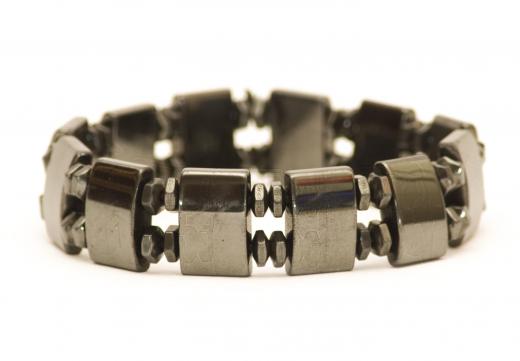What are Metalloids?
Metalloids is a chemistry term used to describe a group of chemical elements that share some of the physical and chemical properties of metals, such as iron and copper, but cannot be classified as metals because they also share some of the properties of non-metal elements, such as carbon and sulfur. The metalloids are usually said to consist of boron, arsenic, antimony, tellurium, germanium and silicon. Sometimes polonium and astatine are also included, but there is some scientific debate over whether they are true metalloids. These elements are often brittle and shiny in appearance, but there is no strict definition of the properties and characteristics required to define an element as a metalloid. The term semi-metals is sometimes also used to refer to metalloid elements, but this term includes not only chemical elements, but also compounds made up of several elements.
All metalloids are solids at normal pressure and temperature, and some of the metalloids' characteristics, such as having a luster or sheen, are similar to that of metal elements. However, the metalloids' properties such as their ionization energy, electronegativity, and chemical reactivity differ from both the nonmetal and metal elements in the periodic table. For example, the chemical reactivity of boron is like that of a metal in some cases, and like that of a nonmetal in other cases, depending on what material it is reacting with.

The metalloids vary in density and at what temperature they boil or melt. Several of the metalloid elements are semiconductors, meaning they can carry an electrical charge. Boron, silicon and germanium are semiconductors that are used in the production of electronics, for example to make transistors, diodes and solar batteries. Silicon is an especially important semiconducting material in the production of computer components such as computer chips. Silicon is also used in such diverse products as hairsprays, adhesives, and automobile polishes.

Other metalloids are also used for various scientific and industrial purposes. Germanium is used in the production of transistor elements and to make spectroscopes and infrared detectors. Arsenic is well-known as a poisonous substance, but can also be used as a doping agent, meaning it is added to semiconductors to improve their conductivity. Antimony is another doping agent, and is also used in the manufacture of storage batteries. Tellurium is often used to change the properties of various metals and alloys, such as copper or stainless steel, and is also used in the production of colored glass and ceramics.
AS FEATURED ON:
AS FEATURED ON:












Discussion Comments
Is it common for metalloids to often be grainy in structure so that they are abrasive? From the list of metalloids, I only know this is true for boron and silicon, so I'm wondering if it is the case with the others.
I know boron is the main part of borax which can be grainy, even though it's main purpose isn't necessarily to scratch away at stains. Obviously silicon forms sand, which is regularly used to remove paint.
I would be interested to know whether these characteristics hold true for the other metalloids. Finally, when these elements are in pure form, are they usually more crystalline like the nonmetals or "chunky" like real metals?
Metalloids are not the same thing as transition metals, are they? If I remember correctly, I think they are the groups next to each other on the periodic table. What is different about the two groups, though? Is there something about the transition metals that makes them similar to metalloids and other nonmetals?
Also, could someone please explain why metalloids in the periodic table go at a diagonal rather than going straight down like the noble gases?
@matthewc23 - You are right in thinking that the silicon that is used in processors and computer chips originates as sand. Sand is just silicon combined with oxygen. Even though silicon is the most common element in Earth's surface, I'm not sure that there is anywhere you can find pure silicon. Someone correct me if I'm wrong.
Companies that create computer chips simply remove the oxygen from the sand which leaves mostly pure silicon. Then it goes through another refining process to create the material for computers. Once it is purified, the silicon has the same properties of metalloids that were mentioned in the article like being shiny and functioning as a semiconductor.
The only element here that I really know anything about is silicon. I have always wondered how it can be used in computer chips, since it is also the main part of sand.
I always assumed that when silicon was mined for computer parts, that it was in the form of sand, but after reading this article, I think maybe I am wrong. If I am wrong, then how does it come out of the ground. Also, what is different about the silicon used in computers compared to the silicon in sand? Obviously sand cannot conduct any type of electrical current.
Post your comments